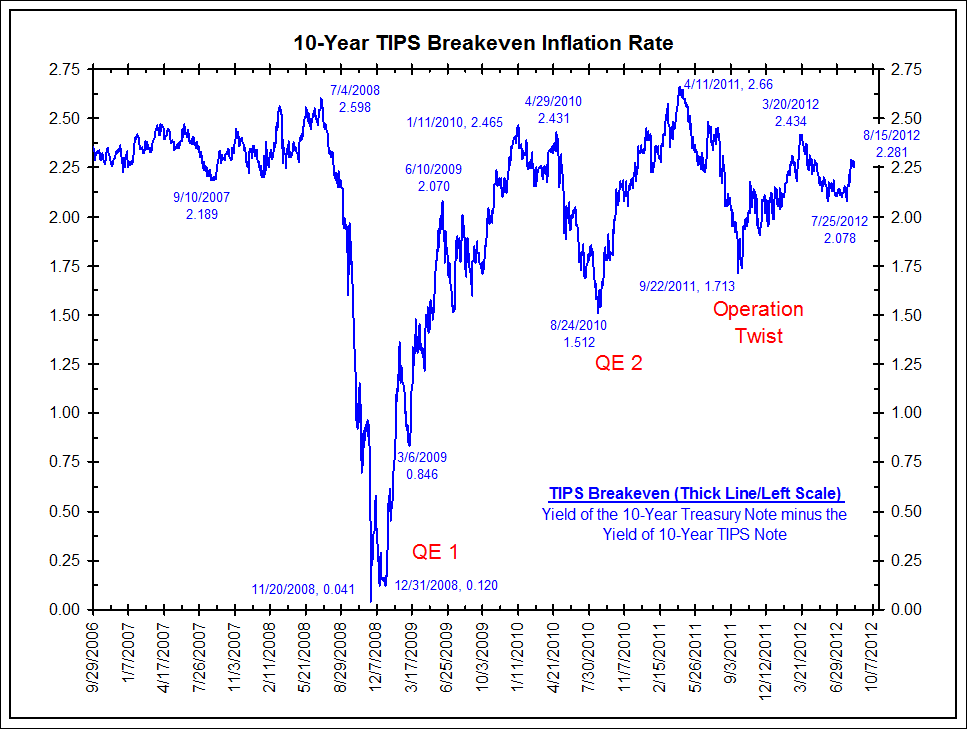The Wall Street Journal – Ben Bernanke’s Waiting Game
Despite all the hoopla in the market about QE3, which has run unabated pretty much since QE2 ended last year, we’ve been banging on contrarian points: That the Fed doesn’t want to do another big bond-buying program, and won’t unless it’s absolutely forced to. There are storm clouds on the horizon that may well force the bank to “do something,” but they’re still in the distance. Which means, as Goldman Sachs’s Jan Hatzius argued, you might want to lay off those September QE3 bets.
The Wall Street Journal – Treasurys Drop as Odds of Fed Action Go Lower
Investors’ waning confidence that the Federal Reserve will start another fresh round of bond-buying next month is damping the market appetite for U.S. Treasurys. For months, investors and economists have clung to expectations that the Fed will act soon to boost the economy. But a recent string of positive economic reports has suddenly put that certainty in doubt, sending Treasurys’ prices down and yields higher…The move coincided with a report by Goldman Sachs Group Inc. chief economist Jan Hatzius, who said he sees a low chance that the Fed will announce any plans to step up its activities at its next meeting in September. Mr. Hatzius argues that the recent run of better-than-expected U.S. economic data has reduced the need for the Fed to act immediately by launching a third round of bond purchases…Mr. Hatzius says his “best estimate” is for the Fed to wait until later in the year, or even 2013. “At the margin, the recent data have made us a bit more confident,” Mr. Hatzius says in the report.
Comment
Ben Bernanke has repeatedly said the Federal Reserve targets expected inflation. To that end, Bernanke has also said he looks at inflation breakeven rates using TIPS to measure expected inflation. The 10-year is a widely used benchmark in this regard.
As the chart below shows, the Federal Reserve has never initiated more accommodation when the TIPS inflation breakeven rate was above 2.0%. This level is important because the Federal Reserve adopted 2.0% as an inflation target last January.
When expected inflation is above 2.0%, it does not mean the FOMC has to tighten. But it can mean there is too much inflation to add more accommodation. Of course the Federal Reserve can decide to ignore this target, but since they adopted it less than a year ago, they risk their own credibility in doing so.
This might be the big stumbling block to QE3.
Click to enlarge:
Source: Bianco Research
~~~
For more information on this institutional research, please contact:
Max Konzelman
max.konzelman@arborresearch.com
800-606-1872



What's been said:
Discussions found on the web: